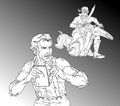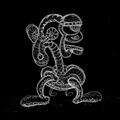Template:Selected anniversaries/April 27: Difference between revisions
No edit summary |
No edit summary |
||
| Line 48: | Line 48: | ||
File:AESOP.jpg|link=AESOP|1979: Orbital artificial intelligence [[AESOP]] makes contact with space activist and detective [[Gerard K. O'Neill (nonfiction)|Gerard K. O'Neill]]. | File:AESOP.jpg|link=AESOP|1979: Orbital artificial intelligence [[AESOP]] makes contact with space activist and detective [[Gerard K. O'Neill (nonfiction)|Gerard K. O'Neill]]. | ||
||Guido Stampacchia | ||1978: Guido Stampacchia dies ... mathematician, known for his work on the theory of variational inequalities, the calculus of variation and the theory of elliptic partial differential equations. Pic. | ||
||1981 | ||1981: Xerox PARC introduces the computer mouse. | ||
File:Gerard_O'Neill.gif|link=Gerard K. O'Neill (nonfiction)|1992: Physicist and space activist [[Gerard K. O'Neill (nonfiction)|Gerard Kitchen O'Neill]] dies. He invented particle storage rings and mass drivers; in the 1970s he developed a plan to build human settlements in outer space. | File:Gerard_O'Neill.gif|link=Gerard K. O'Neill (nonfiction)|1992: Physicist and space activist [[Gerard K. O'Neill (nonfiction)|Gerard Kitchen O'Neill]] dies. He invented particle storage rings and mass drivers; in the 1970s he developed a plan to build human settlements in outer space. | ||
|| | ||1995: Peter Maurice Wright dies ... principal scientific officer for MI5, the British counter-intelligence agency. His book Spycatcher became an international bestseller with sales of over two million copies. Spycatcher was part memoir, part exposé of what Wright claimed were serious institutional failings in MI5 and his subsequent investigations into those. | ||
||2015 | ||2011: Cyrus Derman dies ... mathematician and amateur musician who did research in Markov decision process, stochastic processes, operations research, statistics and a variety of other fields. Pic. | ||
||2015: Alexander Rich dies ... biologist, biophysicist, and academic. | |||
File:Creature_4.jpg|link=Creature 4 (nonfiction)|2018: Signed first edition of ''[[Creature 4 (nonfiction)|Creature 4]]'' sells for $500,000 USD in charity auction to benefit victims of [[crimes against mathematical constants]]. | File:Creature_4.jpg|link=Creature 4 (nonfiction)|2018: Signed first edition of ''[[Creature 4 (nonfiction)|Creature 4]]'' sells for $500,000 USD in charity auction to benefit victims of [[crimes against mathematical constants]]. | ||
</gallery> | </gallery> | ||
Revision as of 17:48, 24 August 2018
1791: Painter and inventor Samuel Morse born. He will co-invent the Morse code.
1869: Only known copy of Interview with Wallace War-Heels is stolen by Baron Zersetzung. Twain and War-Heels will soon team up to recover the illustration.
1913: Mathematician, author, activist, and academic Irving Adler born. He will be a plaintiff in the McCarthy-era case Adler vs. Board of Education.
1937: Biochemist and crime-fighter John Kendrew uses data from X-ray crystallography experiments to predict and prevent crimes against physical constants.
1938: Mathematician and philosopher Edmund Husserl dies. He argued that transcendental consciousness sets the limits of all possible knowledge.
1953: In a landmark criminal mathematics trial, an undercover Nomogram gives testimony against criminal mathematical functions Gnotilus and Forbidden Ratio.
1978: Former United States President Nixon aide John D. Ehrlichman is released from an Arizona prison after serving 18 months for Watergate-related crimes.
1979: Orbital artificial intelligence AESOP makes contact with space activist and detective Gerard K. O'Neill.
- Gerard O'Neill.gif
1992: Physicist and space activist Gerard Kitchen O'Neill dies. He invented particle storage rings and mass drivers; in the 1970s he developed a plan to build human settlements in outer space.
2018: Signed first edition of Creature 4 sells for $500,000 USD in charity auction to benefit victims of crimes against mathematical constants.








